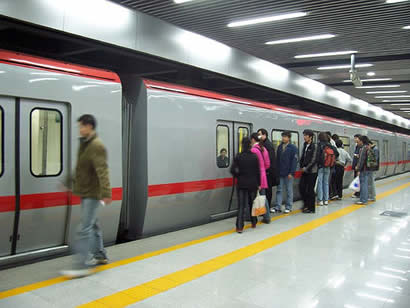By Huma Sheikh
It's always like feeling panicky the first few times in a foreign country when your working place is not within the walking range. In China amid huge crowds of people, traveling, especially for a non-Chinese-speaking foreigner, seems intimidating, but not for me! I have enjoyed traveling in Beijing.
|

|
| Huma Sheikh |
Getting around in busy Chinese cities, people mostly take the subway and buses, which is one way to save money than taking a cab. Both the subway and buses are extremely crowded throughout the day. People prefer to take the subway to avoid traffic jams even though they have to transfer lines between the stations to get to the destinations.
I also take the subway to and from workplace, covering about 13 km each day. Initially, I feared traveling as a non-Chinese speaking foreigner may do me trouble as I had to change the line in the middle of my journey and go out of the station to enter another line to get to office. Nevertheless, I preferred the subway.
The subway is very well equipped with electronic signboards almost everywhere, consistently popping out destinations both in Chinese and English as each train arrives. The announcement also follows the arrival of the next train, again both in English and Chinese and there is hardly any chance of getting lost, even for a first-timer who has just arrived in China. Every station has moving walkways for easier movement, escalators and a host of other relevant facilities amid huge crowds -- which is no wonder to find in Beijing, the capital of the world's most populous country.
|

|
| Beijing subway |
As I started getting used to my route gradually, I would think how easily we overlook observing things around in our native country; maybe the comfort zone of being in one's own country and speaking native language is too much a reason to think about it. I have many a times traveled by the subway -- it's metro in India; nonetheless I had hardly paid any attention to the bilingual announcements made in Hindi and English. Nor did I know how it would be like to a foreigner if there were no English announcement, other than the native language.
Subway in Beijing, whose ridership averages 3.4 million per day and set a daily record of 4.92 million on Aug. 22 last year, looks like a different world where traveling and getting to the destination seem the only thing on the travellers' mind.
As a train rolls out, transporting thousands of people in one go, another large group of people shows up within seconds and with it continues their "unending" struggle to get to "behind the Yellow line" to make sure they embark on the next jammed-packed train. This process of jostling, embarking and disembarking repeats itself throughout the day until the last train at 2300 hrs. The service starts again at 0500 hrs in the morning. The time-line between the arrivals of each train is two minutes.
The Beijing Subway is growing rapidly with eight lines in service currently, covering a total length of 199.31 km. The extensive underground rail system is contemplating having a mileage of up to 561 km, much ahead of the well-established systems in Paris Metro and London underground, by 2015.
While I was satisfied with the way subway ride was going, I began to be soaking in an ususual feeling. A lady on a train sat beside me the other day and inadvertently put a volley of questions to me. She wanted to know about a specific station. Because of my inability to speak Chinese, I was unable to answer her queries. The moment was dreary to me and I felt that everyone was looking at me and waiting for me to answer. However, I also felt elated because the moment encouraged me to think I am part of the country, part of its people and that I must learn to speak Chinese as quickly as possible.
(Xinhuanet April 1, 2009)